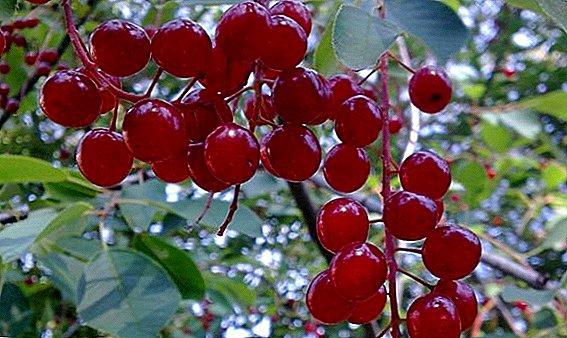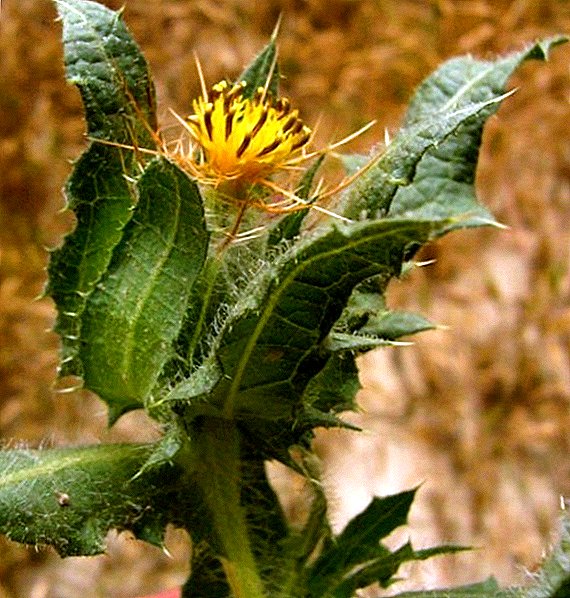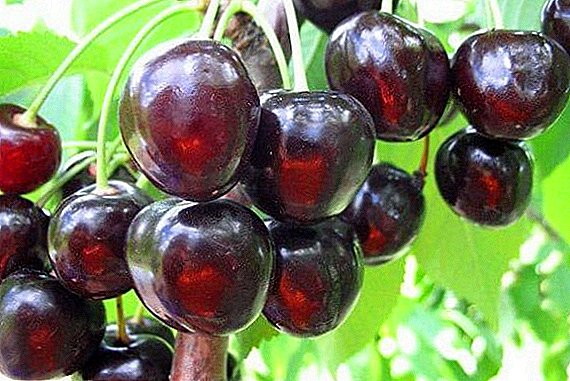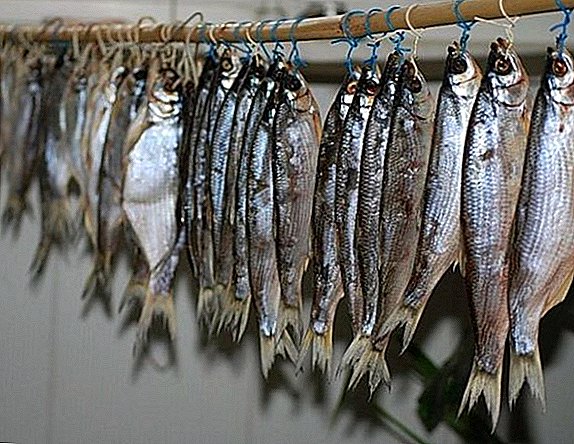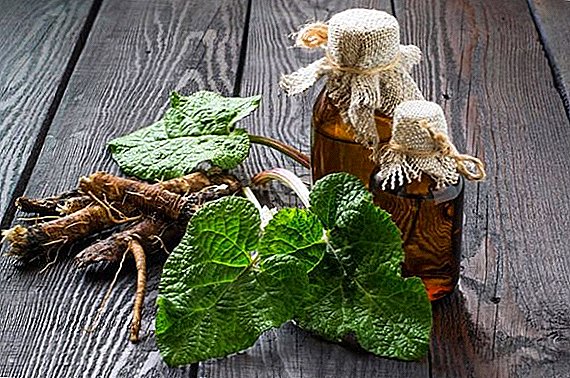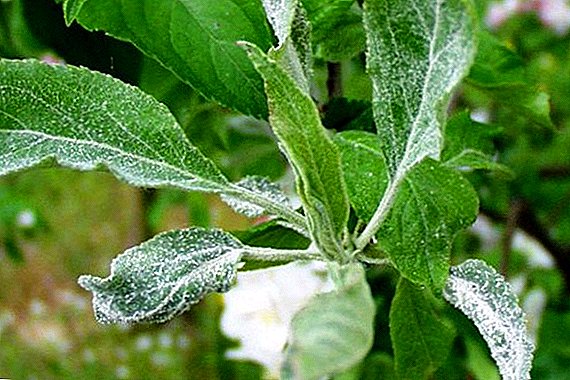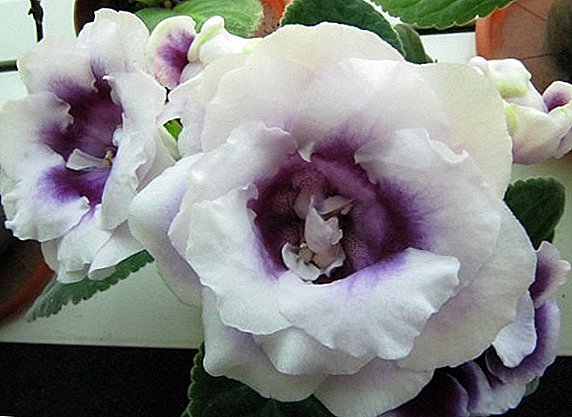 The large and vibrant colors of the blueprint represent the main aesthetic value in this plant. In the care of him will need some experience and effort, but it's worth it - small, unique in shape and color of the bouquet on your windowsill will delight you every morning. Consider the features of growing this flower in the article.
The large and vibrant colors of the blueprint represent the main aesthetic value in this plant. In the care of him will need some experience and effort, but it's worth it - small, unique in shape and color of the bouquet on your windowsill will delight you every morning. Consider the features of growing this flower in the article.
Description
The second Latin name of the flower is gloxinia. This is a perennial herb. The cultivars for growing on window-sills and flower beds are derived.
Did you know? "Glocke" translated from German means "bell". Therefore, “Gloxinia” is a logical and more common name for synonymia, adopted by amateur florist.It has a rather massive, flattened, rough tuber that can reach 40 cm in diameter. It is usually light brown in color, with thin filiform roots. The average plant height is up to 25 cm, but there are also dwarf varieties.
 The color of the shoots is green or reddish. The leaves are oval or pith, 1 to 6 cm long. They are pubescent, sometimes they may have lighter stripes along the main veins, sharp tips and teeth along the edge of the entire plate.
The color of the shoots is green or reddish. The leaves are oval or pith, 1 to 6 cm long. They are pubescent, sometimes they may have lighter stripes along the main veins, sharp tips and teeth along the edge of the entire plate.Learn how to care for gloxinia, how to protect it from diseases and pests.Inflorescences are kept on a flower stalk, as if they are collected in bunches. Mounted either on the main runaway or on the side. Flowers generally have the form of an elongated bell, and each is kept on a separate pedicel. Quantity - up to 10 pieces. Petals fleshy and pubescent, the length of flowers - from 2 to 6 cm. Number - 5 stuff. Color - 50 shades of red, blue and yellow.
Selection varieties contain white, pink and purple hues. Such flowers may have a polka dot color or a bright velvet border around the edge of the flower. Blossom in March, and under good conditions, the flowering period lasts up to 3 months.
Seeds up to 1 mm in size, ripen in the place of flowers, in seed boxes in the shape of an oblong cone. The surface of the box is brown and smooth. 
Did you know? The plant received its botanical name gloxinia from the German botanist doctor Benjamin Peter Gloksin. His role in the history of the plant is that he specialized in seed plants, and gloxinia in particular. His surname in translation is associated with the shape of a flower - a bell. In 1825, a plant was found similar to gloxinia in shape and color of a flower, but it had a tuber. And the Latin name of the genus "sinningia" It took its origin from the name of V. Sining - a gardener at the Bonn Botanical Garden, who devoted his life to breeding this kind of plants. All tuber varieties are considered selective.
Sorta
Through the efforts of breeders, there are now about 30 main plant species, significantly differing in their basic morphological features. And this work does not stop, so the offer is constantly updated in color and shape of flowers.
The most beautiful are:
- gloxinia "Sambalina";

- gloxinia "Viennese Waltz";
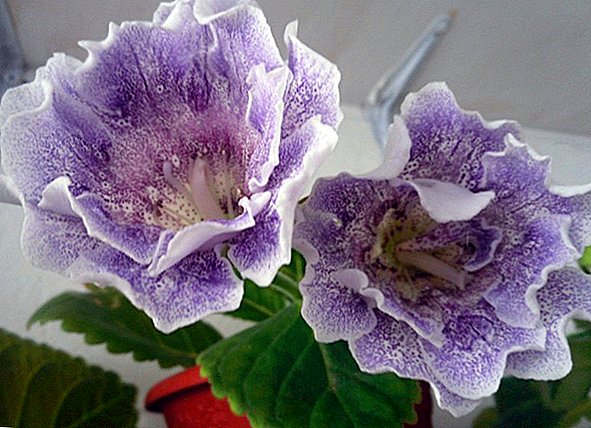
- Sinningia Violaceia;
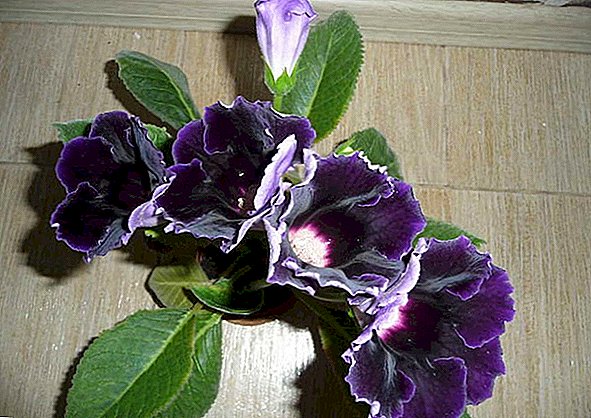
- Sinningia "Cleopatra";
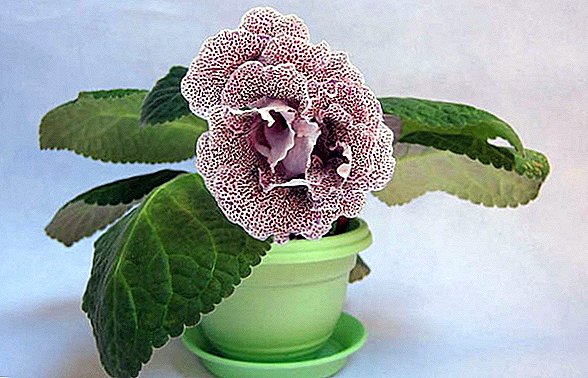
- grade "Ladies' whim".

Terry varieties:
- "Blue Pearl Fild" ("Starlit Night");
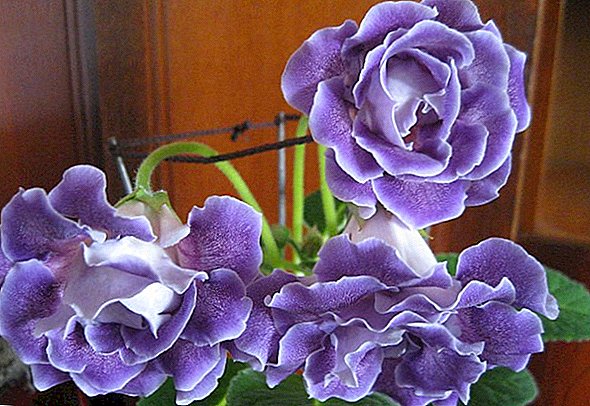
- "Pomegranate frost";

- Miloslav;
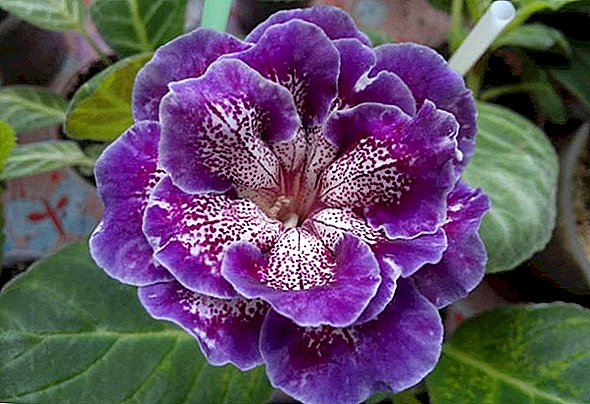
- "Delicate Souffle";
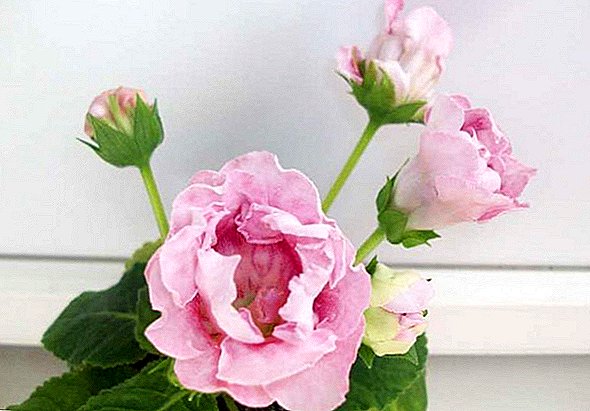
- "Ariel".

Common varieties:
- "Tigrina Viol" ("Koldovo Lake");
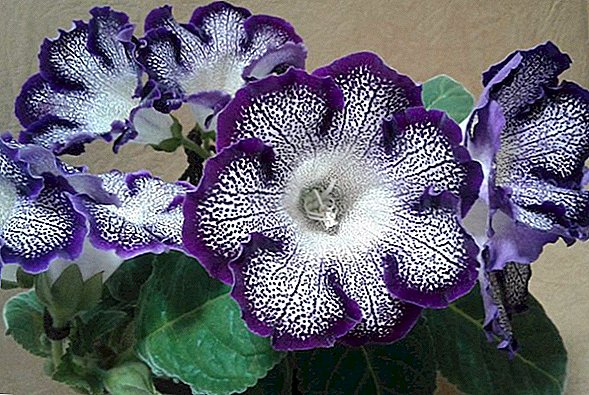
- "TV Galaxy";

- "Black Magic";
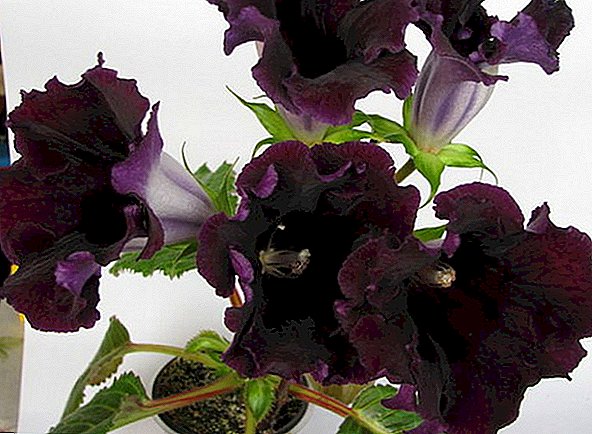
- "Lemon Swirls";
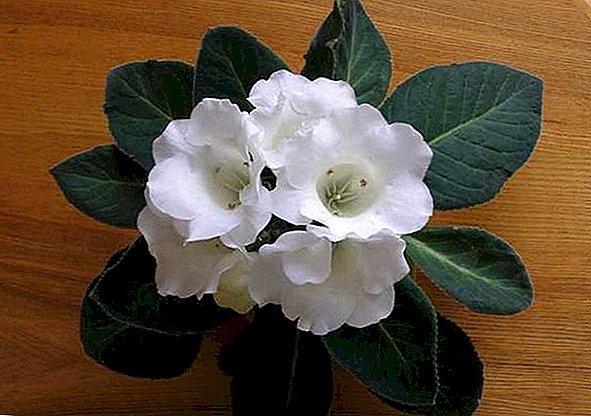
- "Wizardry".
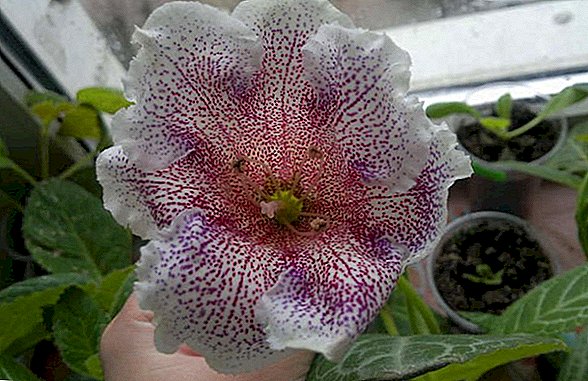
Tidei varieties:
- "Cranberries in sugar";
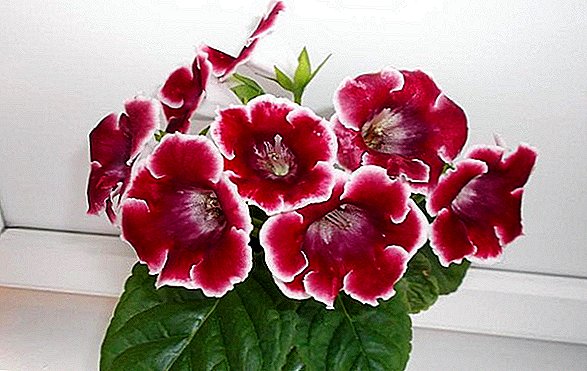
- "Multibells Cherry";
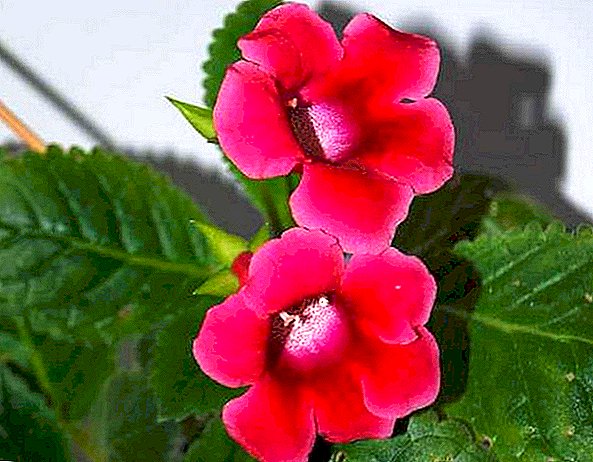
- "Multibells Blue";
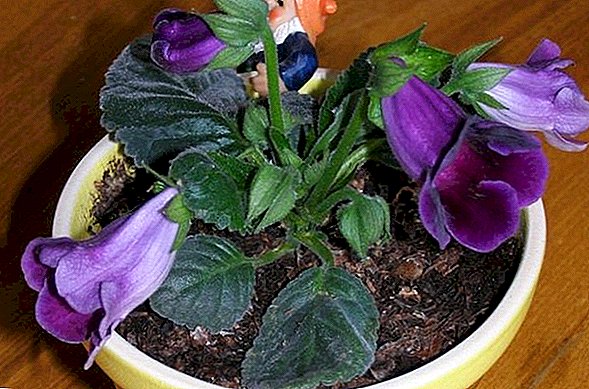
- "Rossiyanochka";
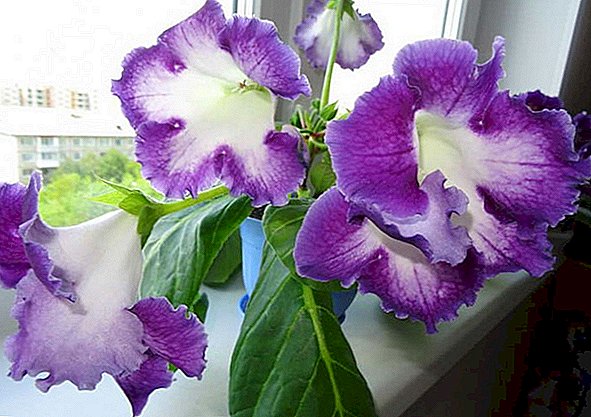
- "Cool brook".
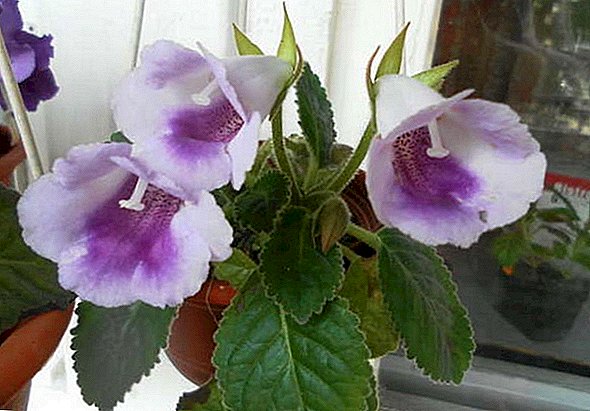
In nature, synningia grows as an epiphyte, and epiphytes include orchids, guzmania, schlumberger, ehmei, platiceriums, vriezii, ripsalis.
Breeding methods
Among flower growers there is a household name for the plant - “glasses”. They can be propagated in several ways:
- Cuttings of leaves.
- Part of a foliage plate.
- With the help of seeds.
- By splitting the tuber.
- By rooting the pedicel.
Option 1:
- you need to lower the tip of the cutting into a glass with boiled water;
- when the roots break through, transplant in a cassette with a primer or a peat tablet;
- flower growers recommend creating isolation from the outside world for the cutting - so the young leaves appear faster. And as soon as they appear, the old sheet is removed.
 If in the spring there are many tops of the plant, you can cut a couple of things and also hide from the outside world. So they are more likely to germinate and bloom, even faster than leaf cutting.
If in the spring there are many tops of the plant, you can cut a couple of things and also hide from the outside world. So they are more likely to germinate and bloom, even faster than leaf cutting.Option 2:
- the stalk is planted directly into the ground;
- primer or peat tablets need to be prepared. There must be a loose earth consistency, so that the path for moisture and air is clear. It makes sense to flavor the primer with perlite (vermiculite), and pour peat tablets into water;
- the preparation of the cutting is the following - we process the cut with a stimulant in order to form roots more quickly;
- In the middle of the ground, make a groove of about 1.5 cm and pour sand. Stalk planted at an angle;
- we isolate the pot with a plastic bag or a glass jar. Remove the insulation as soon as the young tubers and leaves go;
- Place the pot in a warm place, but not in direct sunlight. So settling young escape will be faster.
Landing
As we have already mentioned, a wide range of selection varieties of gloxinia is now presented. They can be purchased both in flower shops and on Internet sites. If the tubers are properly planted, they will invariably delight you with lush blooming.
Tuber
The basic rules for selecting a tuber: diameter 3-4 cm, dense, elastic, without rotten areas or mold.
The specificity of the syngony tuber is that the roots on the tuber grow over the entire surface: both on the inner part of the tuber and on the outer, where buds are formed. They can be activated and begin to germinate at any time of the year. If there are dried or dormant buds on the tuber, it makes sense to remove them with tweezers before planting into the ground. You also need to clean it from the dead roots.
Well, if the tuber before planting will be processed in a fungicide (root formation stimulator). Recommended drugs: Vitaros, Maxim, Rovral, Fundazol. If there is absolutely nothing at hand - hold the tuber for 20-30 minutes in a dark pink saturated solution of potassium permanganate. 
The soil
It is necessary to loosen and water the soil, saturating it with oxygen. If you have a peat tablet, pour water to make it swollen. Ideal floral soil mix for violets and begonias. If you just have a purchased substrate, we enrich it:
- vermiculite - in the ratio of 1-2 tablespoons per 1 liter;
- sand - 1-2 handfuls per 1 liter.
The pot or planting pot should be of medium size, from the tuber placed in the middle of the soil, and 3-4 cm to the edge of the pot should be left.
Fill the rest of the soil, not getting enough to the edge of 4-5 cm. We make a depression in the soil by 1.5-2 cm, we fill it with sand. Tuber is placed in the hole with a convex side into the soil, and partly with a notch, where there are irregularities on the surface (these are future buds), upwards.
The tuber is covered with soil, but it is important that it does not fall into the recess - this can contribute to the appearance of putrefactive processes in the kidneys and delay their maturation. As the young shoots ripen, the tuber should be covered completely with soil, the layer thickness is about 4-5 cm.
Video: how to plant a blueprint
Watering
Tuber watering around. Water should be at room temperature - a few hours separated from the water supply or passed through household filters. There are two options for watering:
- from above directly into the soil;
- in the pan, allowing the soil to evenly soak up moisture.
We place in a bright and warm place, without direct sunlight and drafts, but with a stable temperature of + 22 ° C. With the right agro conditions in a month you will see young shoots.
Care
Gloxinia has some special care features:
- The ground part of the flower dies off after the flowering period. It is important to let the process end naturally.
- When the plant begins a period of rest, it is necessary to feed non-nitrogen fertilizer, for example, monophosphate.
- For full growth, the size of the pot is important - for an adult plant from 15 cm in diameter.
- There is the possibility of year-round contemplation of this beauty - place the flowerpots with flowers in a place with a constant warm temperature and provide lighting for 14-16 hours a day.

Important! If the room is cold or sharply cold, the gloxinia buds turn black and it ceases to bloom.
Lighting
The plant requires at least 12-14 hours of light supply. If necessary, be prepared to further organize the backlight. We repeat - we exclude direct sunlight, they are destructive for a plant.
Important! In order to understand that there is a shortage of light, look at the leaves: if they are located horizontally and the stem does not stretch out, then everything is normal. If dark green plates stretch upward on an elongated stem, an artificial extension of the light period is needed.
Location
Placing a flower bed on the windowsill, you will encounter certain risks. Firstly, it is a draft - the ventilation of the room is complicated. Also, batteries are usually placed under the windowsill - the question of additional air moistening will arise. 
Watering
In the process of watering using purified and not cold water. Regular sensation - when you see that the top layer of soil has dried up, irrigate it with a medical syringe. The uniformity of moistening of the entire soil is important.
Top dressing
Feeding should be carried out on time. One of its main goals is the bright, saturated colors of the bluebells during the flowering period. We begin the scheme in a month and a half after planting a tuber. Florists recommend the use of the drug "Kemira Lux". It is suitable as a young plant, flowering, and only going to produce buds.
The frequency of feeding depends on the size of the flower and the volume of the container - on average 2-3 times a month. During the flowering period - 3 times. It is important to feed in the already wetted soil. If improperly recharge, then the soil oversaturated with nitrogen will eventually give either lush leaves and few bouquets of flowers, or the plant will not bloom at all.
Pruning
When the moment of flowering comes, it is recommended to carefully cut off the first buds - this will cause the syringing to emit even more flowers. In the course of flowering, immediately remove the faded bells with the pedicel, making room for new ones.  After the flowering period is over, and the plant enters the resting phase, it is necessary to cut the entire ground part with a clean tool, leaving a stump that is 1-2 cm tall. Another 2-3 weeks should be watered stump, but without any type of feeding. Until spring, you need to keep alive and juicy only flower tuber.
After the flowering period is over, and the plant enters the resting phase, it is necessary to cut the entire ground part with a clean tool, leaving a stump that is 1-2 cm tall. Another 2-3 weeks should be watered stump, but without any type of feeding. Until spring, you need to keep alive and juicy only flower tuber.
Temperature
As we have said, synningia begins to bloom in March and, under good conditions, continues to do this for 3 months. During this period, in the absence of disasters and force majeure of the weather (such as snowfall in April 2017), it is fairly ordinary room temperature. When the plant leaves in a dormant period, it is better for it to stay in a cooler temperature, about + 10 ° С.
Important! The leaflets are a kind of litmus test that identifies withflower condition If they stretch upwards - the temperature for them is high, if they fall below the edge of the pot, the flower is freezing.
Humidity
Gloxinia will not tolerate moisture on the leaves or flowers. That is, the option of spraying is not suitable, it is necessary to moisten the air, and not the plant, since it requires a stable humidity of about 60-80%. Therefore, next to the pot, place additional containers with water, regularly doing wet cleaning in the room. 
Transfer
Toward the end of February, the tubing of the syringium wakes up. This is the optimal time for planting or transplanting plants, and this is the most active phase of tuber sales in all trading platforms.
A pot for planting in the soil is taken not so much high as wide. This is due to the peculiarity of the root system located over the entire area of the tuber and growing in width. Drainage is an important part of preparing the soil for a plant. If you are preparing the soil mix yourself, then stick to the following proportions:
- sod land - 2 parts;
- peat - 2 parts;
- sand - 1 part.
Or 2 option:
- a mixture of turf and leaf land in the ratio of 1: 1;
- humus, peat and sand - all in 1 part.
Diseases
Unfortunately, this gentle beauty is prone to disease. They can not only disfigure its appearance and cause further deformation of the plant, but also lead to the loss of the bush. The main problems are of a fungal nature, and not all are treatable. Therefore, after finding a problem, it is urgent to “diagnose” and begin the struggle.
Types of fungal diseases to which synningia is subject:
- Late blight - dark spots on the leaves and the stem, the leaves wither, dry or rot. Virtually no cure. Pathogens live in the soil up to 8 years. Treatment: treatment with "Fitosporin", but prevention is most effective.
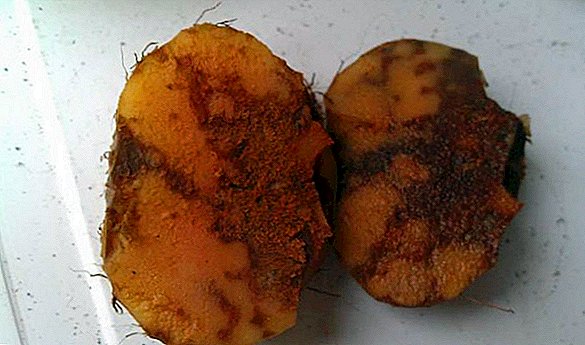
- Mealy dew - white powdery coating on all parts of the plant. The reason - the wrong care. Treatment: treatment of the affected plant and surrounding flowers with fungicides. If the situation is exacerbated or running, will require the destruction of the flower garden.
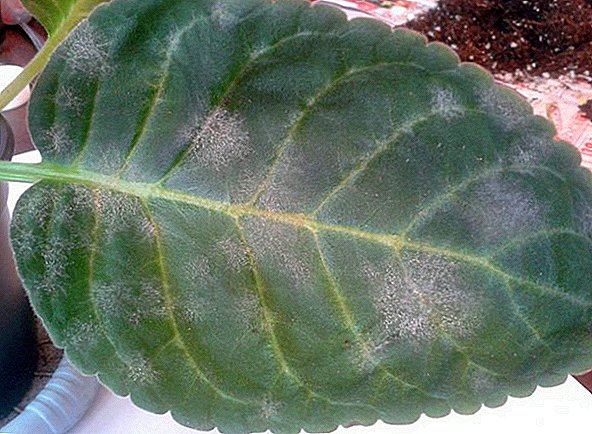
- Downy mildew - on the lower part of the sheet, spots of powdery appearance appear, which alternately change color. The reason - violation of irrigation techniques and conditions of detention. Treatment: removal of affected leaves. An alternate treatment with drugs - Previkur, Topaz, Fundazol or other fungicides is necessary in order to exclude the adaptation of the fungus to the preparation.
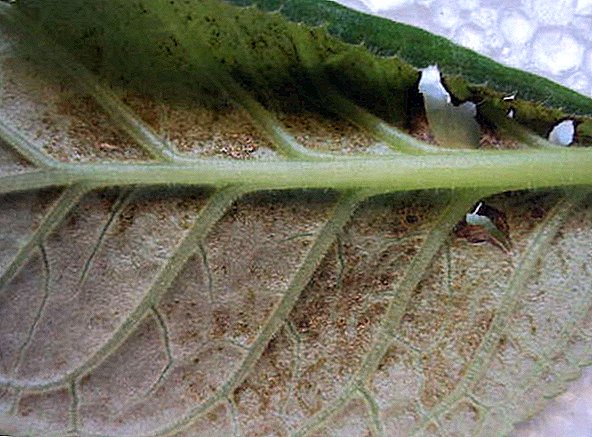
- Anthracnose - small brown spots affecting all parts of the plant, starting with the sheets. The reason is rainwater ingress. If the situation is rapidly deteriorating, it is better to destroy the plant. Treatment: spraying fungicides, from 3 times, an interval of 2-3 weeks. It is also possible to carry out preventive spraying with copper oxychloride, cuproxate or oxyhom.
- Ascohitosis - brown shades with clear brown edges. The reason is the overmoistening of air. The affected leaf plates are promptly removed and burned. Treatment: spraying with Bordeaux mixture, copper sulphate, fungicides ("Vectra" or "Abig-peak").
- Septoria - rusty stains on the leaf plate and the stem. The reason - violation of technology care (lack of light and high humidity). Treatment: changing the conditions of placement of the shoot, treatment with drugs (fungicide or copper-containing drugs).
- Phyllosticosis - dark rounded spots with a brown middle, breaks the leaf plate. The reason is high humidity. Treatment: dry the plant, process with copper oxychloride, copper sulphate or bordeaux mixture.
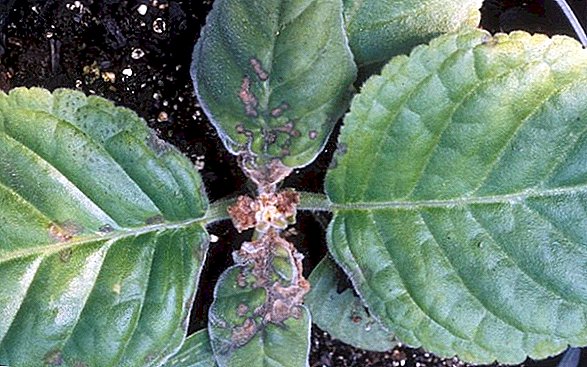
- Fusarium - withered, curling leaves of brown color. Shoots crack and have dark stripes. The main reason is contaminated soil, insufficient feed, violation of irrigation technology. Treatment: replace the soil, wash the tuber in a non-concentrated manganese solution, treat with a fungicide.

- Gray rot - The plant becomes soft and rots from the stem at the base of the tuber. On the leaf plates brown spots of a watery type and gray mold, stem in black. The reason is a dense and too wet soil. Treatment: if spraying drugs ("Fundazol" or "Rowral") did not save the situation, most likely, the disease will lead to the death of the flower.
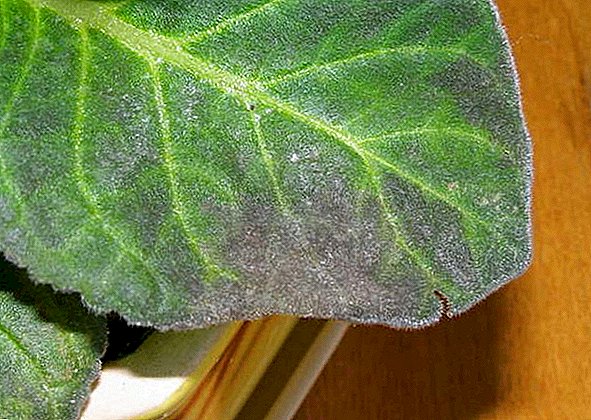
- virose
- and bacterioses.
The first are transmitted by fungal spores through insects. Visually determined by spots on all parts of the plant, in the form of stripes, spots, dashes, dots. It is not possible to treat, you just need to remove the infected shrub as far as possible without allowing a wholesale infection of the entire flower garden. The only prevention: reproduction from 100% healthy sources. In the second case, the bacteria get into your nursery through untreated inventory, pots or contaminated soil. Characteristic features: growths, spots of the mucous membrane of nature on all parts of the plant. It is impossible to treat, and the removal of only the infected part is a temporary measure. Remove the whole plant. The maximum that can be done in this situation for the prevention of immunity is regularly sprayed with drugs: "Zircon" or "Appin".
In the second case, the bacteria get into your nursery through untreated inventory, pots or contaminated soil. Characteristic features: growths, spots of the mucous membrane of nature on all parts of the plant. It is impossible to treat, and the removal of only the infected part is a temporary measure. Remove the whole plant. The maximum that can be done in this situation for the prevention of immunity is regularly sprayed with drugs: "Zircon" or "Appin".
Sinningia is a magnificent plant, mostly indoor, endearing your heart at first sight. It is quite unpretentious in the care, the most difficult thing is to save the tuber when the flower is at rest. It multiplies easily enough, has an incredible beauty of a bunch of bluebells, so that all labor costs pay off with aesthetic pleasure.
It is possible to put on rooting if there are several points of growth and they are at least a couple of centimeters in height. Pass (if this is an urgent need) neatly possible too. But still, given the time of year, I would not make any sudden movements. The plant itself will tell you how to proceed with it. In winter, many Siningians do not want to sleep. In any case, they decide it, not you. If the ground part dries out, then retire. Storage of tubers as for gloxinia.If you don’t sleep, then you have to wait for spring, as a rule, new growth points are formed on the nodule. After they form shoots, old shoots will need to be cut. The most important thing in the autumn-winter period is not to pour the tuber. Transplanting into fresh land is also best done in spring.

In the division of minisinning tuber. I would not do that. Disappear again. They are very good and quickly multiply shoots. True, there are varieties such as Rosy Tiger, for example, which have just nothing to cut off to rooting. But even here there is a way out - to grow up and root an escape that has woken up after hibernation. And then wait for the next one, which is very delayed flowering.

As Tattoo has already written, leaves grow nodules, but these nodules do not germinate. Why this happens is unknown. Although I met information that in isolated cases, the nodule still germinated.
In the summer I planted a sheet of Orange Singer - half a minimine (for the experiment). The nubble grew decent, the size of a fifty-kopeck coin, but does not want to germinate: duma:. A week ago, hung it in the package right under the lamp, we'll see.





























